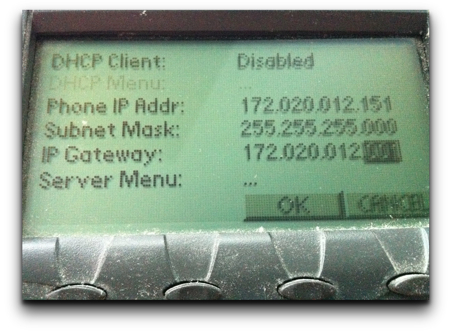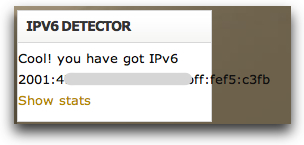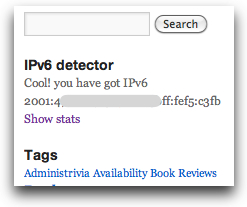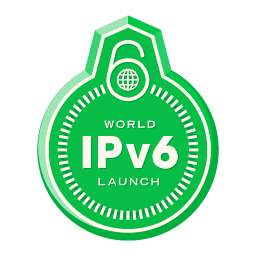 After a Reddit thread started up that briefly referenced a 2011 post I wrote about adding IPv6 to Node.js apps, I was contacted by a Redditor who was surprised that my site wasn’t available over IPv6!
After a Reddit thread started up that briefly referenced a 2011 post I wrote about adding IPv6 to Node.js apps, I was contacted by a Redditor who was surprised that my site wasn’t available over IPv6!
HUH???
I was surprised, too, because this site is hosted on a dual-stack server at Hurricane Electric and has been accessible over IPv6 since June 7, 2011, right before the World IPv6 Day event.
But in checking into it… there was no AAAA record in DNS for “code.danyork.com” that would point to the server, so the report was indeed accurate. For regular users this site was not available over IPv6.
It turned out to be one of those system administration issues that can bite you. A month or two ago, TypePad, the provider I still use for my personal DanYork.com site, experienced a severe DDoS attack that took many sites offline. They recovered but in doing so changed the way that sites were referenced a bit. I had to switch to using a CNAME instead of an IP address as I had been doing. The problem there is that due to the “no CNAME at zone apex” rule of DNS, I could no longer use just “http://danyork.com” – I would have to switch to using “http://www.danyork.com/”.
The episode highlighted to me, though, the need to be sure I have “Test over IPv6” in my list of things to check after making any major changes to any of my sites!
I didn’t want to switch and so I moved the DNS for “danyork.com” over to CloudFlare to make use of their “CNAME Flattening” so that I could still use “danyork.com”.
However, in moving the DNS info from my previous DNS hosting provider to CloudFlare, I messed up. I didn’t bring across the AAAA record for code.danyork.com. Also, very bizarrely, I didn’t have the “Automatic IPv6” setting enabled for danyork.com – even though it is now supposed to be on by default for all new domains.
So the fix was simple – I added the AAAA record for code.danyork.com, and I also flipped the switch on the Automatic IPv6 gateway. Now both code.danyork.com and danyork.com are fully available over IPv6.
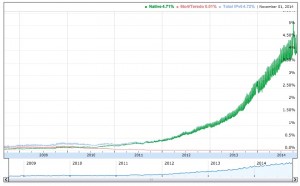 It is fun to watch the various IPv6 statistics sites because they continue to show the amazing growth of IPv6 around the world. The World IPv6 Launch measurements now show Verizon Wireless’ network at 59% IPv6, T-Mobile USA at 43%, AT&T at 25%. Google’s IPv6 statistics show that traffic into Google web sites globally is about to hit 5%. And then today Akamai launched new IPv6 trend charts that show IPv6 traffic out of Belgium at 29.2%, from Germany 12% and from Luxembourg and the USA right at 10% with Peru not far behind.
It is fun to watch the various IPv6 statistics sites because they continue to show the amazing growth of IPv6 around the world. The World IPv6 Launch measurements now show Verizon Wireless’ network at 59% IPv6, T-Mobile USA at 43%, AT&T at 25%. Google’s IPv6 statistics show that traffic into Google web sites globally is about to hit 5%. And then today Akamai launched new IPv6 trend charts that show IPv6 traffic out of Belgium at 29.2%, from Germany 12% and from Luxembourg and the USA right at 10% with Peru not far behind.
 After
After 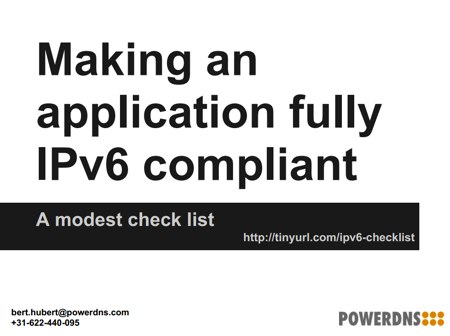
 If your cable company here in the USA is Time Warner Cable and you get your high speed Internet access through them, they are looking for more volunteers for their residential IPv6 trials. This message below went out yesterday to the NANOG mailing list:
If your cable company here in the USA is Time Warner Cable and you get your high speed Internet access through them, they are looking for more volunteers for their residential IPv6 trials. This message below went out yesterday to the NANOG mailing list: